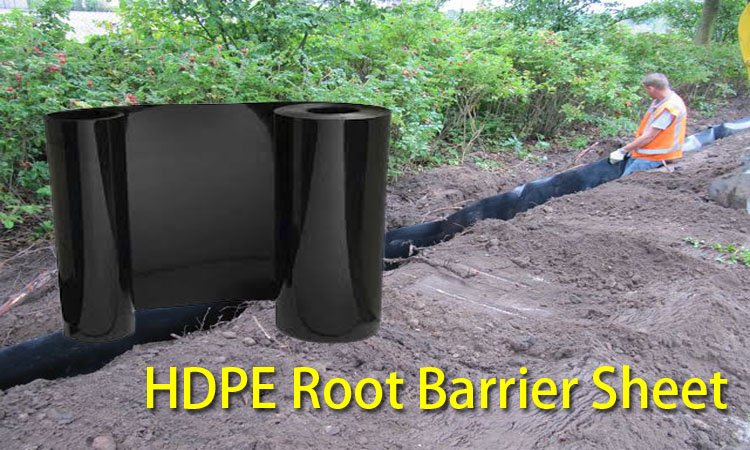How HDPE Root Barriers Create Proper Environment for Trees and Structures?
Fruit trees, oak trees, and bamboo trees are just a few of the numerous varieties of trees. Trees are responsible for providing shade, absorbing carbon dioxide from the atmosphere, and serving a variety of functions in our everyday lives. The correct trees may enhance our landscape!
You may plant a tree anywhere in your yard, but you should consider the tree’s location and the HDPE root barrier that will protect it from the weather while you’re planning where to put it.
What is the function of a Root Barrier?
For the HDPE root barrier, heavy-duty plastic sheets that are both flexible and waterproof are used. It is erected to keep tree roots from encroaching on structures and soil moisture from evaporating for safety reasons. The stabilization of reactive clay under foundations, watertight cutoff walls, the restriction of contaminant migration, and hardscape protection are some of its many uses, including bioswales and new house construction.
How HDPE Root Barriers Create Proper Environment for Trees and Structures?
There is a wide range of materials and styles that may be used. They may be classified as either solid or porous. The pros and cons of each are unique.
-
Barricades will be erected:
How the HDPE root barrier construction will affect the tree’s ability to produce healthy roots?
HDPE root barrier that is the same length as the tree’s diameter has been shown to be helpful in the long run. They may be found at a usual depth of two feet. When planting a tree, a barrier should be built around it.
-
Preparing the Ground:
The HDPE root barrier will be more effective if the soil around the trees is loosened. It’s a win-win situation for trees since loose soil allows for a more robust root system. It also helps to promote the fastest root growth. You may choose to apply compost, which has a high concentration of organic matter and may help stimulate the growth of your tree.
Root barriers fall within the following categories:
Screens and root traps are made from fabric-welded sheets and a wide range of woven fabrics. Although roots may grow through small openings, larger ones will choke and kill the roots. There are metal or solid plastic root deflectors that are used to deflect roots.
Thicker barriers can resist more severe blows as the trees grow, making installation easier. Fabrics with chemical coatings serve as chemical inhibitors, preventing the root system from establishing and growing correctly. These, on the other hand, will become less and less effective over time.
Points to Remember During the Installation Process:
- Your tree’s roots are likely to grow well beyond the reach of its branching structure. Root barriers should be set such that they may reach almost the surface of the soil when they are completely developed.
- Increasing the root protection screen’s depth will, of course, prevent roots from growing below the ground.
- You can count on the experts at Tree Service to give you a free estimate when everything else fails. In addition to our extensive experience in the industry, we are also a family-run firm.
- This suggests that there aren’t any intermediaries involved. As a result, we’re able to pass along some of those savings to you. We also have a business license and a bond.
- There are qualified arborists on our crew who can do the work efficiently and effectively. We may advise against installing an HDPE root barrier sheet in other cases since the tree is older than the house.
- The soil adapts to the tree’s presence, removing moisture from the ground. Root barriers may actually work against the interests of a homeowner by forcing a particular location to retain and then expand moisture.
Conclusion:
This can damage the foundation of a house. Things may become challenging at times, as you can see. When selecting where a root barrier should be built, speaking with an experienced team is essential.
Choosing the HDPE root barriers from Singhal Industries Private Limited is the perfect solution. The company has been sincere in making the best root barriers. Their work is impeccable in every possible way. Choosing their products is the best decision possible.
Tree attaches become exceptionally near the surface and is the reason for significant harm. Structures with shallow establishments can be subverted. Harmed lines, or lines with defective joints, can become impeded by roots. Root development is also known to make drying up soils the degree that dirt shrinkage can bring about pieces of the establishment done being upheld. The design might die down and break whenever this happens, and costly support might be the central arrangement in these conditions.

















